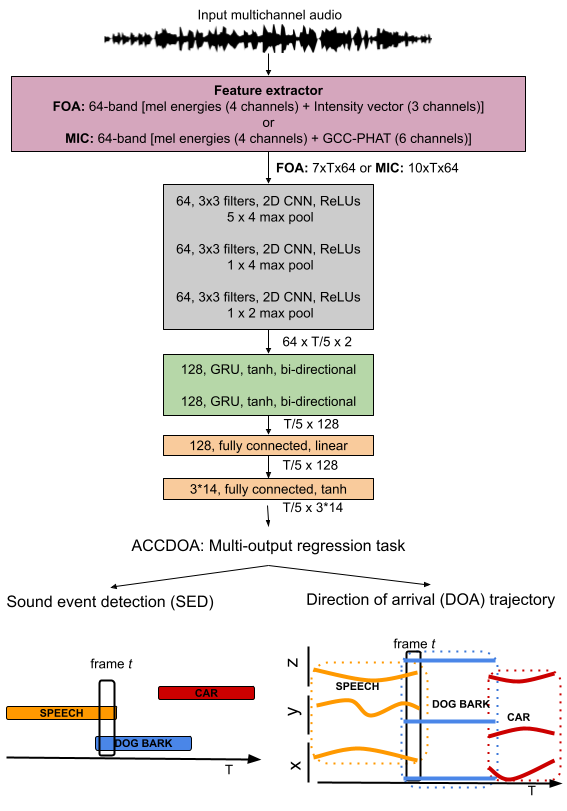ACCDOA: Activity-Coupled Cartesian Direction of Arrival Representation for Sound Event Localization and Detection
Neural-network (NN)-based methods show high performance in sound event localization and detection (SELD). Conventional NN-based methods use two branches for a sound event detection (SED) target and a direction-of-arrival (DOA) target. The two-branch representation with a single network has to decide how to balance the two objectives during optimization. Using two networks dedicated to each task increases system complexity and network size. To address these problems, we propose an activity-coupled Cartesian DOA (ACCDOA) representation, which assigns a sound event activity to the length of a corresponding Cartesian DOA vector. The ACCDOA representation enables us to solve a SELD task with a single target and has two advantages: avoiding the necessity of balancing the objectives and model size increase. In experimental evaluations with the DCASE 2020 Task 3 dataset, the ACCDOA representation outperformed the two-branch representation in SELD metrics with a smaller network size. The ACCDOA-based SELD system also performed better than state-of-the-art SELD systems in terms of localization and location-dependent detection.
PDF Abstract
